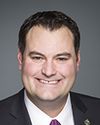I'm going to offer you a general comment, and then maybe Master Warrant Officer Greyeyes can jump in.
Right now, we do have a lot of cultural awareness programs within the CAF. I don't think it's being offered to everybody; it's one aspect of it.
The other aspect that is extremely important is education on the other side; i.e., on many occasions I ended up sitting down with parents who were having doubts about letting their young men or young women join the service. Those of us in uniform who are aboriginal, when it comes down to recruiting, we can also educate many parents about what is waiting for their children who are about to sign up.
Yes, we do have some programs in place, and once again, Officer Greyeyes can expand on it.
The last point I would like to offer is that these programs were in existence when I signed up 30 years ago. I've seen huge progress. When I signed up, I wasn't really vocal about who I was. People knew I was a status Indian because I still lived on the reserve. The reserve is right next to Valcartier. But it's not something that I was speaking out loud about; let's be honest. Nowadays, it's much better perceived.
Every time we're running a Bold Eagle or a Black Bear program, there's a bunch of instructors. These instructors very often are non-aboriginal, so they themselves are being introduced to the aboriginal culture, and there's a domino effect. These instructors are very often sergeants, warrant officers, and captains, people who still have 15 to 20 years to go in their career. I like to see that as extremely positive. I've seen a bunch of Van Doos instructing in these programs who came out of it saying or thinking, that's not what they were thinking of. It was a discovery for them.




